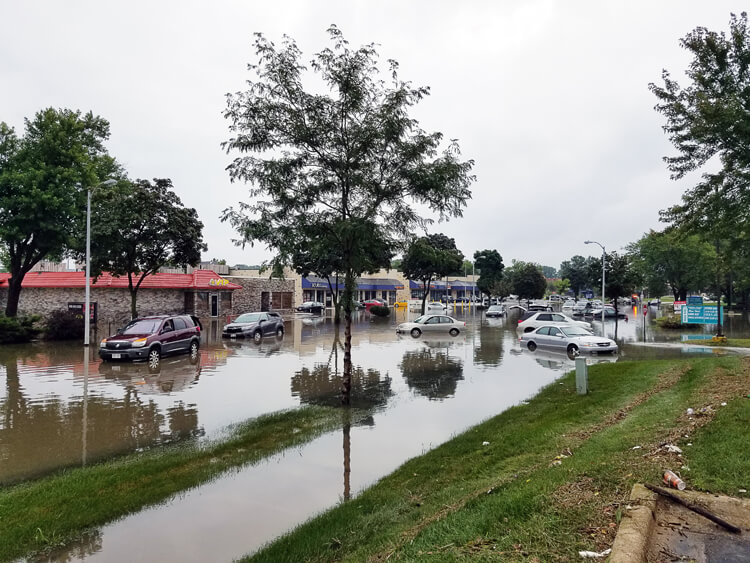As if dealing with a flooded home wasn’t enough, you then have to worry about the very real possibility of the unwelcome intruder that is mold (when it rains it pours and all that – quite literally in this case!). And with floods holding the accolade of leading natural disasters in America today – unavoidable, even, in many regions of the country – it’s something that may be closer than you think. Read about the role of mold in post Hurricane Katrina deaths here. So, what should you do if the unthinkable happens and you have to deal with a flooded property?
- Call Mold Removal Experts
Yep, before even surveying the damage, arrange for mold remediation as soon as possible. It doesn’t matter how big the flood – you will need to take steps to either prevent or remove mold from forming. It may not feel like it, but mold is a far bigger problem than water.
- Survey The Damage
Inspecting and documenting the damage is absolutely vital – if for nothing other than insurance and tax purposes. Get your family out of the house as soon as possible, too. Safety is – above all else – paramount.
- Remove The Water
The quicker you can get the water out (with professional assistance!), the better, to minimize the risk of mold development and growth. “Mold can begin to grow a day or two after flooding and so it is important the property is dried out as soon as possible”, Jamie Woodhall, Technical and Innovations Manager at Rentokil Specialist Hygiene tells MoldBlogger. Use a pump or wet vacuum to extract the water from floors, basements, heating systems and any other place it could be pooling. Ensure that the source of the flooding is fully dried up, too.
- Dry It Quickly
As we all know, mold spores need moisture to thrive off. It is vital, therefore, to dry the area as fast as possible and with as much professional support as you can to ensure that every nook and cranny is dealt with. Open windows, doors, cabinets and drawers and use air-conditioning, heaters, fans and dehumidifiers to assist. General rule of thumb is to keep these machines going for an extra 24 hours or so longer than you feel is necessary. Do not, however, overheat the space, as this can cause mold spores to grow exponentially.
“Controlling the humidity in a flooded property is crucial and a combination of fans and driers needs to be utilized to remove the moisture content down to a safe level where the mold cannot germinate,” Richard Walker, Technical and Development Manager at Property Repair Specialist, Peter Cox, tells us.
- To Bleach Or Not To Bleach
A more pressing dilemma, even, than Shakespeare’s Hamlet, the use of bleach in both removing and preventing mold has long been argued. Yet while bleach can be effective in keeping mold at bay on nonporous surfaces, such as tile and porcelain, it can actually encourage mold growth on other porous materials, such as wood, so use it with caution. The Centers for Disease Control and Prevention advises using no more than one cup of household bleach to one gallon of water.
- Let It Go
Not everything will be salvageable – it’s just part of life. The sooner this is accepted, the sooner you will be happy to discard items that have been destroyed by the flood – be they curtains, upholstered furniture, pillows, mattresses or stuffed animals. Wet ceiling tiles lose their insulative properties so will also need to be replaced pronto. Vitally, killing mold is not enough – it also must be removed to ensure no lingering dead spores hang around to cause more trouble, including a myriad of potential health problems. Having said that, not everything will be ruined, so identify what is in your ‘safe zone’ and remove it from the problem area immediately to a safe, dry space. When it comes to carpets, specifically, you’ll need to take extra care. Professional Carpet Cleaning Technician at Fantastic Services, Dean Davies, tells us to always replace saturated carpet padding, use baking soda to absorb and remove trapped moisture and give your carpet a good steam clean “to kill any toxins and suck up the dead mold spores.”
- Keep Eyes Peeled
Over the next few days, weeks and months, keep an extra look out for persistent dampness and new mold, which can form in as little as two days. Stay on top of indoor humidity controls, especially in more vulnerable rooms such as the kitchen and bathroom.


11 comments